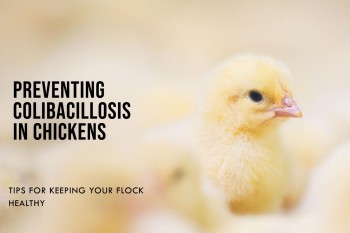Common Duck Diseases: Overview, Symptoms, Diagnosis, and Prevention
Introduction:
Ducks are popular domesticated birds, valued for their meat,
eggs, and down feathers. However, like any living organism, they are
susceptible to various diseases. Understanding the common diseases affecting
ducks, their causes, symptoms, and prevention strategies is crucial for
maintaining a healthy flock. This article provides an overview of some
prevalent duck diseases, including their epidemiology, transmission, signs and
symptoms, postmortem lesions, diagnosis, treatment, and prevention.
1. Duck Viral Enteritis (Duck Plague):
Epidemiology:
Duck Viral Enteritis is caused by the herpesvirus Anatid
herpesvirus 1. It affects waterfowl, including ducks, geese, and swans,
worldwide.
Transmission:
The virus is highly contagious and spreads through direct
contact with infected birds, contaminated water, feces, or surfaces. Insects
and contaminated equipment can also transmit the disease.
Signs and Symptoms:
- Sudden death in affected ducks.
- Depression, loss of appetite, and reduced egg production.
- Swelling of the head and neck.
- Greenish diarrhea.
- Nervous signs such as tremors and twisting of the neck.
Postmortem Lesions:
- Hemorrhages in the liver, spleen, and heart.
- Enlarged kidneys with urate deposits.
- Necrotic patches in the intestine.
Diagnosis:
Diagnosis is based on clinical signs, postmortem findings,
and laboratory tests, including virus isolation and serological tests.
Treatment:
No specific treatment is available. Affected birds should be
isolated, and supportive care provided to improve their overall health.
Prevention:
- Vaccination is recommended for ducks.
- Strict biosecurity measures, including proper sanitation
and disinfection protocols.
- Avoid introducing new ducks from unknown sources.
2. Duck Viral Hepatitis (Duck Hepatitis A):
Epidemiology:
Duck Viral Hepatitis is caused by the duck hepatitis A
virus, belonging to the Picornaviridae family. It primarily affects young
ducklings.
Transmission:
The disease spreads through the oral-fecal route,
contaminated water, and surfaces.
Signs and Symptoms:
- Sudden death, particularly in ducklings less than three
weeks old.
- Lethargy, weakness, and loss of appetite.
- Greenish diarrhea.
- Reduced growth rate.
Postmortem Lesions:
- Enlarged and pale liver.
- Fibrin deposits in the peritoneal cavity.
- Hemorrhages in various organs.
Diagnosis:
Diagnosis involves clinical signs, postmortem findings,
virus isolation, and serological tests.
Treatment:
No specific treatment is available. Supportive care,
including adequate warmth and nutrition, is important for affected ducklings.
Prevention:
- Vaccination of breeding ducks before egg production.
- Strict hygiene practices in the hatchery, including
disinfection of eggs and equipment.
- Separation of infected and susceptible birds.
3. Duck Viral Enteritis (Duck Hepatitis B):
Epidemiology:
Duck Viral Enteritis, caused by the duck hepatitis B virus,
affects young ducklings and is widespread in many countries.
Transmission:
Transmission occurs through direct contact with infected
birds, contaminated water, and surfaces.
Signs and Symptoms:
- Sudden death in ducklings.
- Lethargy, depression, and loss of appetite.
- Diarrhea, often yellowish or greenish.
- Growth retardation.
Postmortem Lesions:
- Enlarged and pale liver.
- Swollen kidneys with urate deposits.
- Hemorrhages in various organs.
Diagnosis:
Diagnosis involves clinical signs, postmortem findings,
virus isolation, and serological tests.
Treatment:
No specific treatment is available. Supportive care,
including warmth and proper nutrition, is essential for affected ducklings.
Prevention:
- Vaccination of breeding ducks before egg production.
- Strict biosecurity measures to prevent introduction of the
virus.
- Proper sanitation and disinfection protocols for water
sources and housing areas.
4. Duck Cholera:
Epidemiology:
Duck Cholera, caused by the bacterium Pasteurella multocida,
affects a wide range of domestic and wild waterfowl.
Transmission:
The disease spreads through direct contact with infected
birds, contaminated water, and contaminated feed or equipment. Flies and other
insects can also transmit the bacteria.
Signs and Symptoms:
- Sudden death, often without prior signs.
- Loss of appetite and depression.
- Greenish diarrhea.
- Swelling of the head and neck.
- Difficulty breathing.
Postmortem Lesions:
- Enlarged spleen and liver.
- Fibrinous pericarditis (inflammation of the heart's outer
lining).
- Consolidation and necrosis of the lungs.
Diagnosis:
Diagnosis is based on clinical signs, postmortem findings,
and laboratory tests such as bacterial culture and identification.
Treatment:
Treatment involves the administration of appropriate
antibiotics as per veterinary guidance. Timely intervention is crucial for
successful treatment.
Prevention:
- Proper sanitation and disinfection of the premises.
- Quarantine and isolation of sick birds.
- Vaccination may be available in some regions.
5. Duck Parvovirus Infection:
Epidemiology:
Duck Parvovirus affects primarily young ducklings, causing
high mortality rates in affected flocks.
Transmission:
The virus spreads through direct contact with infected
birds, contaminated water, or surfaces.
Signs and Symptoms:
- Sudden death, particularly in ducklings less than three
weeks old.
- Depression, weakness, and loss of appetite.
- Delayed growth and poor weight gain.
- Diarrhea.
Postmortem Lesions:
- Enlarged liver and spleen.
- Hemorrhages in various organs.
- Ascites (abnormal fluid accumulation in the abdomen).
Diagnosis:
Diagnosis involves clinical signs, postmortem lesions, and
laboratory tests such as virus isolation and serological tests.
Treatment:
No specific treatment is available. Supportive care,
including warmth and proper nutrition, is crucial for affected ducklings.
Prevention:
- Vaccination of breeding ducks.
- Strict hygiene practices in the hatchery and rearing
facilities.
- Preventing contact with infected birds and contaminated
environments.
Conclusion:
Understanding the common diseases that affect ducks, their
transmission modes, clinical signs, and appropriate prevention measures is
essential for maintaining a healthy flock. Regular monitoring, vaccination,
biosecurity practices, and prompt veterinary intervention are key factors in
preventing and controlling these diseases. Proper care and attention to the
health and well-being of ducks will help ensure their productivity and
longevity.


















